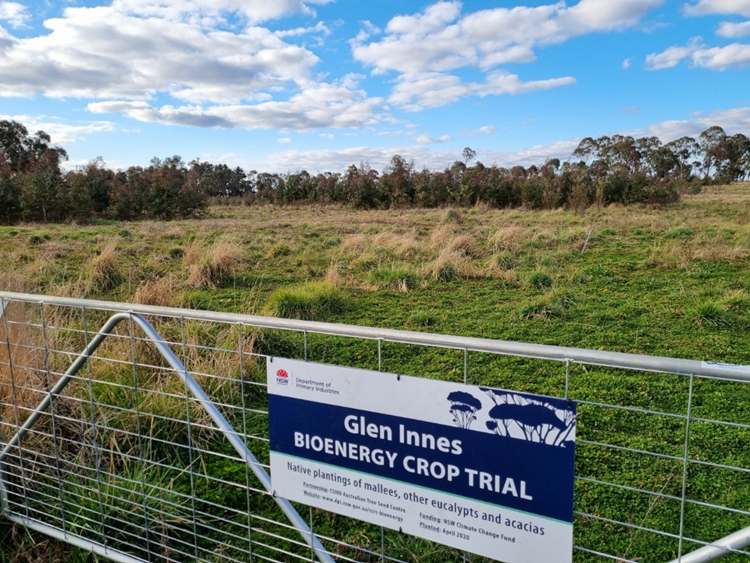Our research
Current research at the GIARAS is directed at improving the pasture base for grazing animals and developing industry capability to deliver livestock products to commercial specifications through:
- building the knowledge base for pasture improvement technology
- developing technology packages for 'best management practice'
- managing feed-gaps to redress nutritional limitations
- matching livestock genetics to feed and management applications
Cattle
The Southern Multi Breed (SMB) project is a collaborative R&D project involving NSW DPI and the University of New England being conducted on five NSW DPI research stations, and the UNE Research Feedlot over the five years (2020 to 2025).
This multi-party co-investment will make a significant contribution to the overall national goal of doubling the rate of genetic gain in the Australian beef herd. The project is co-funded by NSW DPI, UNE, Meat & Livestock Australia (MLA) and the Commonwealth Government through the MLA Donor Company (MDC).
The SMB project will deliver significant enhancements to the current within-breed genetic evaluations conducted by BREEDPLAN, as well as allowing Australian beef producers for the first time to directly compare animals for all BREEDPLAN traits and assess their genetic merit irrespective of breed.
It will also develop a multi-breed resource population to collect high quality, hard to measure traits (i.e. new descriptors of female fertility, health, welfare etc.) that currently do not contribute to the routine BREEDPLAN genetic evaluation in most breeds.
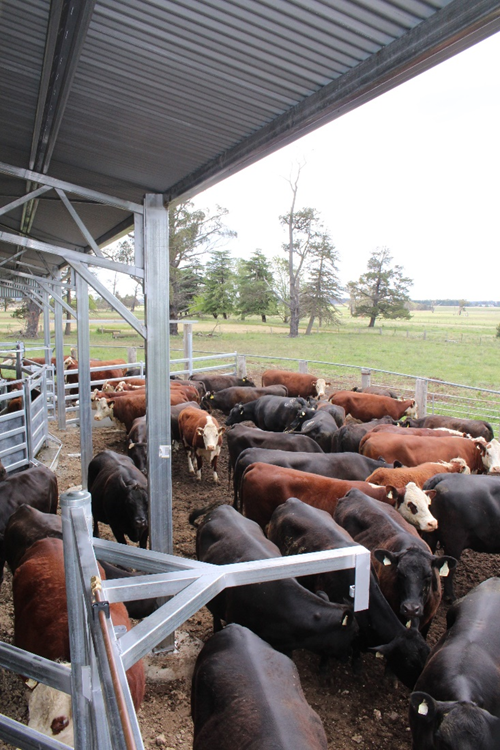
Sheep
Wether trial
This is a collaborative project conducted by NSW DPI and NTLLS and comprises 24 teams of wethers. These animals were randomly selected from participants in spring 2021. The 240 head are grazed as a single mob. Analysing the relative performance of commonly used merino bloodlines has been a key function within NSW DPI for many years.
Wether trials conducted across various locations within NSW have generated data from a variety of bloodlines in differing environmental conditions. Wether trials have been conducted at the GIARAS since 1979 and have continued to provide detailed information to Northern Tableland wool producers about the performance of a variety of bloodlines. This has and will continue to allow producers to inspect and monitor bloodlines to inform them of potential options prior to investing significant funds into a bloodline that may not perform to their expectation in this region.
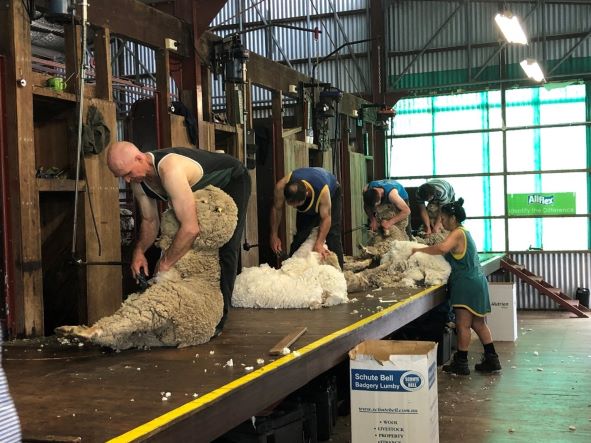
Pasture 1. Extending the boundaries of legume adaption through better soil management
Funded by MLA Donor company as part of Livestock Productivity program
This project targets the 600-850 mm rainfall region of south-eastern Australia where pasture legume productivity is unreliable. Studies have indicated that improved soil nutrition, particularly in regard to pH, will reduce the impact of periodic moisture stress through increased access to soil water associated with better root growth. Improved soil nutrition is also expected to increase rates of pasture recovery following drought. Project activities based out of Glen Innes include:
- Farm survey to benchmark present white clover prevalence in commercial paddocks and how this may relate to soil attributes or management.
- A network of field experiments to evaluate the productivity and persistence of a range of perennial legume species.
- A network of experiments to examine the nature and extent of soil constraints that inhibit legume production and persistence.
Pastures 2. Increase livestock production by integrating tropical pastures into farming systems management
Funded by MLA Donor company as part of Livestock Productivity program
Tropical pastures are gaining interest from red meat producers in southern Australia with over 450,000 ha of tropical perennial grasses sown in northern NSW over the last 15 years. These pastures have traditionally been the predominant forage source for cattle in northern Australia, but a range of species have been found to be widely adapted productive and persistent in northern inland NSW; a frost prone region once considered marginal for this suite of species. The integration of tropical grasses into farming systems requires investigation to quantify their potential benefits to whole-farm profit. Project activities based out of Glen Innes includes:
- The evaluation of tropical perennial grasses deemed most suitable the Northern Tablelands to determine how far into cooler-higher altitude environments tropical grasses can persist.
- A series of competition experiments to determine the appropriate agronomy practices to successfully sow and use tropical grass-legume mixes.
- Confirm the long-term persistence of leucaena in northern inland and central west.
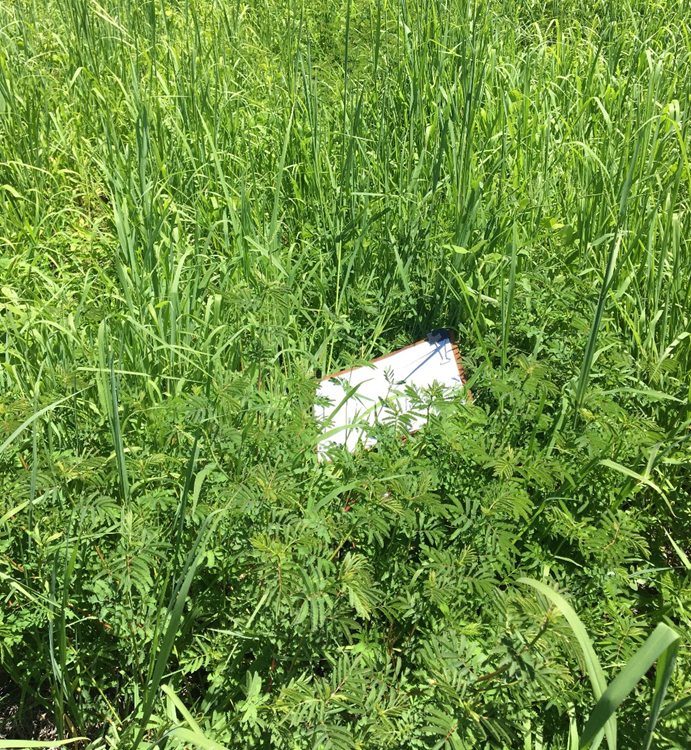
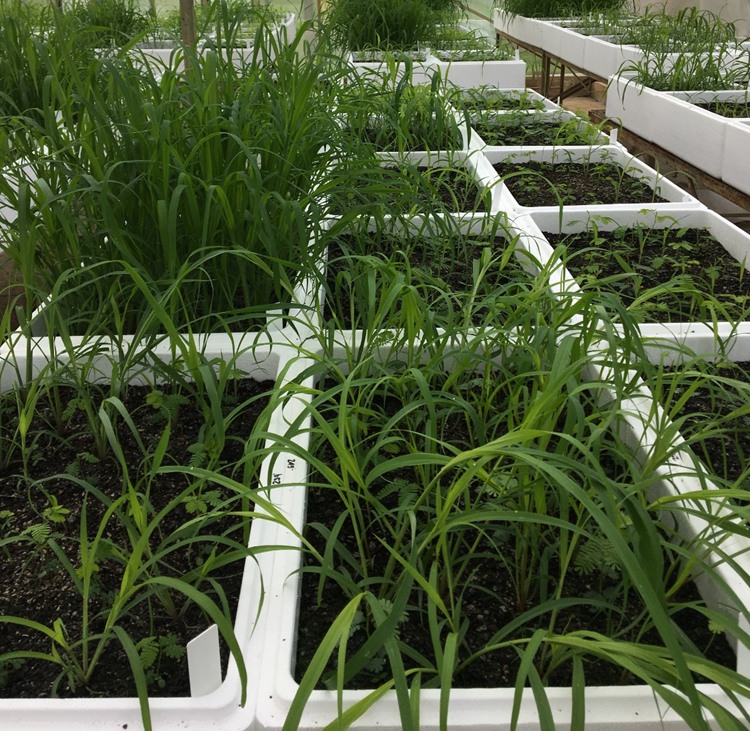
Pastures 3. Alternative strategies to managing Chilean needle grass
Chilean needle grass (CNG) on the Northern Tablelands of NSW is a significant weed. Anecdotal evidence of high grazing value of CNG in this region has been reported where high intensity, short duration grazing and strategic fertiliser applications have been used. This work will quantify the nutritive value of CNG in a summer rainfall environment for animal production at differing growth stages, under altered grazing and fertility regimes. In addition, essential oil production that showed potential for CNG management in glasshouse experiments will be tested under field conditions. This information will be used to build-on current knowledge and test a “best-bet” grazing management package in collaboration with local producer groups to efficiently utilise and manage CNG dominated pastures.
Pastures 4. Mixed species annual fodder crops to increase grazing animal production
Funded by MLA Donor Company
Single species fodder crops involving cereals (i.e. forage oat) are a critical component of the feed base to address feed gaps in eastern Australian livestock systems and to finish livestock to meet specifications. There is growing producer interest in the use of mixed species annual fodder crops which potentially deliver multiple benefits – better balanced nutritional profiles for livestock, higher animal growth rates, a longer growing season and higher biomass production resilient forage production in the face of climate variation and improved soil condition including soil carbon. The current promotion of mixed species plantings is largely based on evidence from the US and Europe. Substantiation on these benefits and a better understanding of the challenges of forage crop mixtures in crop-livestock systems in Australia are required. This project will gather evidence to verify the potential of these crops to improve or prolong forage growth and quality, enhance animal production, mitigate animal health issues and provide legacy long-term agronomic benefits. Glen Innes will host agronomy and grazing experiments and help to facilitate on-farm demonstration sites.

Pastures 5. Serradellas for new environments
Funded and supported by MLA
Seradella species (Ornithopus spp.) are a viable, alternative annual legume species adapted to southern Australia. Currently there is limited date on their performance and persistence in a high rainfall zone particularly the Northern Tablelands. This project will prove that serradella species have widespread adaptation, production and persistence in these environments. This is a collaborative project between CSIRO, NSW DPI and the Tasmanian Institute of Agriculture.
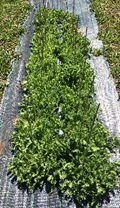
Pastures 6. Clover4Bees
Funded by AgriFutures Australia
Greater than 30 forage legume species are now available in Australia to underpin cropping and livestock production enterprises. Despite many of these species displaying spectacular flowers that must be of some value to pollinators, floral attributes of most species have not been quantified, other than as it relates to the seed production and persistence of the legume itself. Producers therefore have little opportunity to consider potential value to pollinators when selecting which legume species to sow.
A network of sites around the state including Glen Innes will evaluate a range of forage legumes to provide quantitative data comparing the relative volume of nectar produced by forage legume species, determination of the relative value of honeybees to the pollination of the different legume species as determined by seed production and define the flowering windows of the different legume species across a diverse range of environments
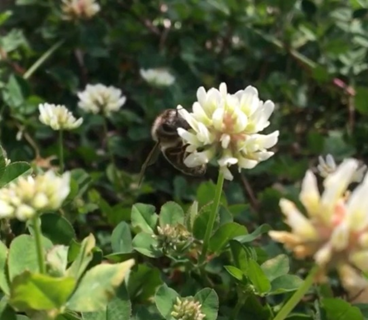
Long term rotation experiment
One of Australia's longest running crop rotation experiments (established in 1921) is located at GIARAS. This experiment has been tracking the long-term effects of farming systems on soil fertility for 100 years. The experiment has demonstrated that the inclusion of a legume ley in the crop sequence is essential for maintaining crop productivity, soil fertility, soil physical attributes and soil biological activity. Of particular interest has been the measurement of organic matter and soil carbon since the 1930’s on-site. On average, the rotations that contain a clover phase had 45% more soil carbon after 100 years of treatment.
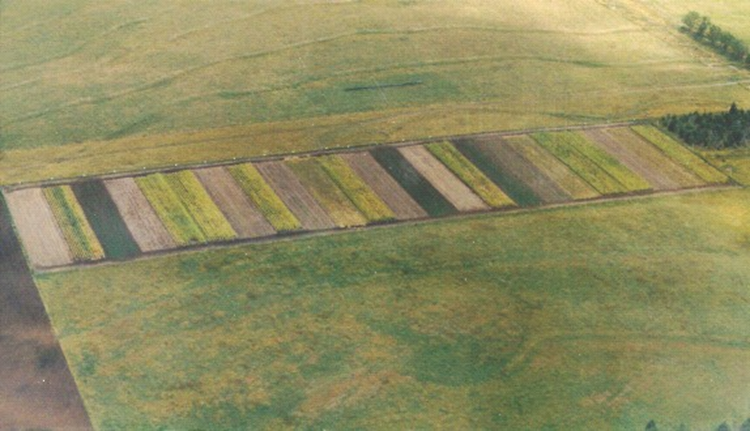
Biomass for bioenergy
This project is focused on demonstrating the potential for bioenergy to contribute to energy system transformation in NSW. Biomass is a renewable storable feedstock that can be utilised in many applications including electricity generation, where it can provide dispatchable power and create stability that allows the expansion of intermittent renewables (solar and wind) without the need for expensive storage solutions. Bioenergy could therefore play an important role in supporting transition to a low-carbon energy system, required to meet net zero emissions.
